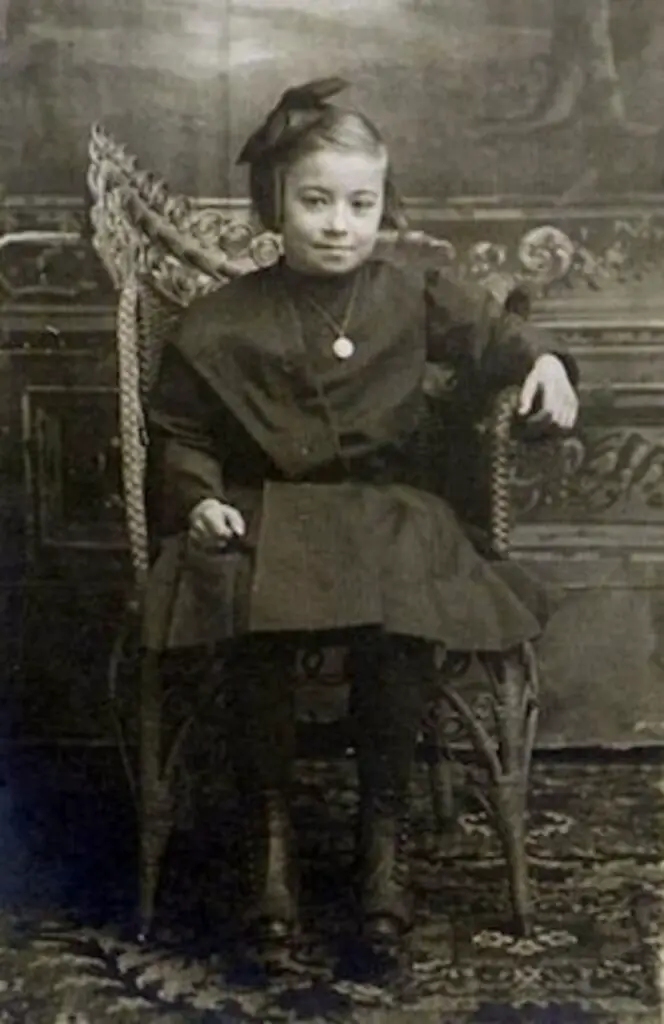It was a typical midnight shift for a corrections officer in Northern New Jersey responsible for escorting a nurse in the medical unit of the county jail so she could screen inmates who had recently arrived. Additional officers made their rounds, waking up inmates who had fallen asleep in the holding cells. Then, they encountered a problem. One inmate did not wake up quickly enough, most likely due to the lingering effects of whichever drug(s) he took prior to his arrest. Commotion erupted. The officer who had been escorting the nurse went to see what was happening only to find two white officers about to beat up a black inmate. Acting on impulse, the escorting officer stood between them and insisted that he would now bring this inmate to see the nurse.
It didn’t matter that the other two officers who continued to stare him down had more time on the job; doing the right thing simply mattered more. The inmate, grateful, thanked him and would continue to thank him for the years that followed even after he had been released. He had run into this correction officer several times on the street only to remind him, “You saved my life that night.”
“I was that type of officer that I wouldn’t let anything unethical happen before my eyes. I wouldn’t allow it. I would intervene,” the officer who is now retired and wished to remain anonymous told The Crime Report. But do all corrections officers choose to do the right thing while on the job? If not, what prevents them from adhering to a moral code?
Not every officer or staff member would step in to help an inmate, even when the consequences may lead to an outcome of life or death. For instance, the same heroic officer who recounted his experience of choosing right over wrong, sees it as common for staff and officers to not fulfill their daily job responsibilities. He specifies, “If an inmate hangs up”—meaning, if he commits suicide—“and he put in about three, four letters to see mental health [personel], and mental health never came, you would never know it because mental health is going to rip all those letters up and throw them in the garbage.”
What he describes as a normal occurrence within a jail, to the outside world, should be considered shocking, disturbing, and unacceptable. Is such behavior driven by pure carelessness or cruelty? Or are these unethical decisions caused by a greater problem and rooted deep within the system? Do officers and staff members simply become products of their environment over time?
Brian Koehn sees this issue as a systemic one. With 28 years of experience working in corrections, Koehn has become a security expert who now serves as the CEO, Co-founder, and Co-chair of Social Purpose Corrections, the first and only nonprofit organization in the United States that attempts to find a balance between security, safety, respect, and rehabilitation to improve prison conditions in all states.
Koehn blames the centuries-old culture embedded in prisons for the lack of ethics within some of these environments.
“People in corrections are conditioned to run corrections a certain way, and it’s very hard for them to challenge if that’s right or wrong…there are staff, there are officers who quite frankly don’t have an issue with that…but I think you will find a majority of them are in corrections because they want to help,” Koehn told The Crime Report.
“It’s called corrections. It’s not called punishment. I think you will find there are more that are interested in humane ways of treating human beings and giving them a second chance than to just throw away the key. But the thing is correction officers don’t make those decisions. Those decisions are made above them.”
If it’s true that many officers begin their careers wanting to help the incarcerated population have a more promising future and assist them in may stepping out of the revolving door crime keeps them stuck in , why does that rarely happen?
In an interview with The Crime Report, Ryan Labrecque recalled his ten years of experience in corrections before moving on to obtain a PhD in Criminal Justice and working as the Senior Program Manager at Research Triangle Institute, an international non-profit research hub “When I started, I was 21 years old, [and] my FTO said to me, this is how we do it. Whatever they said [in the academy], forget that. That’s just for HR,” Labrecque said.
Labrecque points out an issue that many officers seem to face across the country. What they are taught in training, which seems to aim to help others, is rarely executed in real-life situations they face while on the job. In fact, it seems that what would allow facilities to operate more efficiently and ethically becomes erased by the ever-looming dominant prison culture.
“What weighed on my conscience was how we operated in the institution, it didn’t align with what I learned in school…like how do you manage behavior? What are the principles of effective intervention? You look at the practices…and we’re not doing the things that we know work. Why is that? Why is there a disjuncture between policy and practice and the research?” Labrecque said.
Lack of resources within facilities creates some of these drawbacks, which seem to become more prominent when good-intentioned officers wish to resort to better practices. Sometimes it’s simply not possible to do the right thing. For instance, without proper resources like consistent mental health treatment, sometimes officers are left with little choice when trying to control or improve an inmate’s behavior. This could lead to the overuse of restrictive housing, for example, in an attempt to ensure safety within a unit. “I don’t think anyone feels good about putting someone in [restrictive housing]. You can see some people, if they deteriorate or they’re just not doing well in segregation…I think it probably weighs on their conscience…[but] if you don’t have resources…they’ll use the only tool that’s in their toolbox, which happens to be a hammer,” Labrecque said.
On the other hand, if officers had access to more resources and began to take a more rehabilitative approach, leaving the old culture behind, a better environment would begin to flourish.
“The reality is 95 percent are getting out and they’re going back to the community, but they’re going back to the community worse than they came in the system…if you have a facility with a healthy culture, they don’t need restrictive housing,” Koehn said. In addition to the lack of resources, many officers are dissuaded from even interacting with inmates due to the risk of compromising security. Since there have been instances across the country in which officers have been bribed to smuggle in contraband, have aided in escape plans, and have even fallen in love with inmates, over time security measures have become so stringent that even a short conversation with an inmate has become discouraged. Although security should be a priority, removing basic daily social interactions only sets more of a hostile tone.
“There should be people every day encouraging you to do the right thing. It should be everybody saying good morning,” Koehn affirms after recalling that a formerly incarcerated person recently told him the most influential person while he was in prison for ten years happened to be “a case manager that said good morning to him every day and meant it.”
However, when security measures discourage officers from practicing basic politeness and when some officers would never even think to participate in a conversation with an inmate due to the culture that has been ingrained in them, it becomes challenging to create a more rehabilitative environment.
“It’s not very humane on both sides,” Labrecque said.
In fact, the lack of healthy interactions between staff and inmates only perpetuates the “us versus them” mentality, only leading to more tension.
“One person talking down, using profanity, using the power card ‘I’m a staff member: you’re an inmate. You’re going to do what I tell you to,’ that’s the root cause of the problem. Those are the types of people that we need to weed out of corrections or help them understand that there’s a compassionate way of doing it,” Koehn said.
Working conditions tend to interfere with an officer’s ability to show compassion as well. Most often, officers are forced into working overtime, which sometimes extends into “three or four days, maybe five days straight. That can make someone disgruntled…that’s where a lot of the anger and frustration comes from,” the anonymous officer explains.
Without having time to decompress, especially when dealing with situations that provoke high levels of stress, it only makes sense that one’s patience and sensitivity would wear thin, even making one’s mood become volatile over time.
The mentality of doing things simply because they have always been done that way becomes a dangerous kind of governance within correctional facilities. However, this is not the only part of the culture that presses its weight onto the system, suffocating the possibility of breathing new life into the meaning of justice.
“When [officers] are hired, they look for a clique…such as someone they can hang out with, kick it with while they’re there, maybe go out for drinks after work. It’s a bond that they have.”
“The people that they hire are not the same people once they put the uniform on,” the former officer wishing to remain anonymous said. The camaraderie between officers can certainly be worthwhile when they are working together to create a positive environment within facilities. However, the affinity knitted within the fabric of this brotherhood tends to backfire when they stick together to do the wrong thing.
The anonymous officer recounted the sad truth that “…nine times out of ten you walk inside a facility for your shift, you’re not going to go against another officer if they do a report…majority of the time officers get to together to make sure their report coincides.”
Yet, if officers used their camaraderie for good, how would this impact the overall environment of the prison? How would this benefit not only those incarcerated but the officers who work there?
Koehn believes, “[Officers] want to go home to their families and say ‘I helped Johnny get into GED today. I feel good about that,’ not ‘I went home today, and I didn’t get urine thrown on me. Today’s a good day.’”
But how can more purpose be given to the job itself while also dismantling an entire culture? If the profession became more purposeful, would that be enough to restore the ethics that have been lost? Would such changes then shift the stubborn mindsets to instead enforce rules in a more rehabilitative way? By doing so, would that begin to help combat the many other issues plaguing society?
“Corrections is homelessness, corrections is mental health hospitals, corrections is inequality…if you look at all the social problems in our country it’s magnified in corrections,” Koehn points out.
“This is society’s dumping ground for people that they don’t want to deal with. We help inside, we help way beyond corrections and recidivism.”
Ultimately, only transforming perspectives and attitudes would lead to such reform. But as Labrecque puts it, “how you change [the culture], that’s the big question.”



























